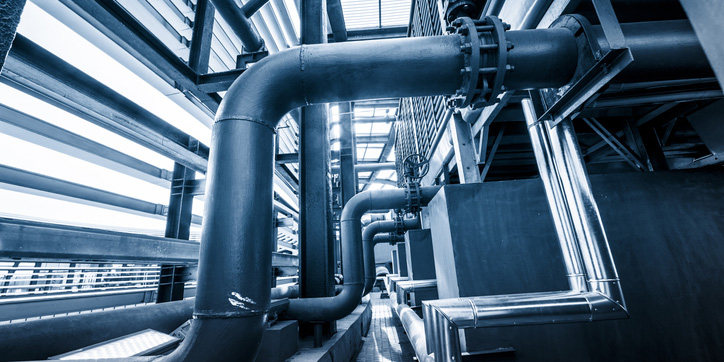- Learning & Development
- Find Courses
- VCPD014 - ASME B31.3 Process Piping D...
ASME B31.3 Process Piping Design (Virtual Classroom)
- popular
Course Type:
Course Number:
Credits:
Understand and apply the ASME B31.3 Process Piping requirements to effectively and safely design process piping systems.
ASME B31.3 Process Piping Design (Virtual Classroom)

Online: Jul 14-18th, 2025
$1,395.00
Final invoices will include applicable sales and use tax.
Product Options
- Location and DateSeats LeftPriceList PriceMember Price
Jul 14-18th, 2025
28
$1395$1395$1395Selected
Schedule
This course commences at 10:30 AM and ends at 4:30 PM Eastern each day, with scheduled breaks throughout.
This fundamental course trains participants to comply with the requirements of ASME B31.3 Process Piping Code. This course features a deep overview of the code, including the operations, scope, and criteria to ensure attendees can interpret and apply B31.3 effectively. Topics are enhanced by in-class problem solving, directly applying the rules and equations of the B31.3 Code for specific design and operating conditions to illustrate correct applications.
The key objective of this course is to examine how various stakeholders employ the B31.3 Code requirements to effectively design piping systems and prevent piping system failures.
By participating in this course, you will learn how to successfully:
- Identify what issues to take into consideration when designing process piping.
- Explain the pressure design of piping and piping components.
- Analyze piping flexibility and gauge the limitations of piping and piping components.
- Identify pipe supports, leak testing, piping failures and their causes.
Who Should Attend?
This course is intended for process piping engineering professionals and employees of related governing entities, including engineers, designers, owners, manufacturers, QA/QC personnel, technicians, inspectors, and maintenance personnel who need an understanding of the requirements for compliance and the trends of Code changes for piping design and analysis, fabrication, examination, and testing. Participants are recommended to have at least 2 years’ experience with piping or pressure vessels.
Supplemental Course Materials (not included with course, purchase separately)
- Please bring a calculator to each day of class.
Course Materials (included in purchase of course)
- Participants will receive access to the following Code/Standard(s) via ASME’s Digital Collection for the duration of the course:
- ASME B31.3 Process Piping Code
- ASME B31J - Stress Intensification Factors (i-Factors), Flexibility Factors (k-Factors), and Their Determination for Metallic Piping Components
- Downloadable version of the course presentation via ASME's learning platform
Topics covered include:
- History of Piping Codes
- ASME B31.3 Operations and Scope
- Piping Failure Modes
- Piping Design Conditions
- Piping Design Criteria
- Design of Straight Pipe
- Design of Piping Components
- Guarding Against Piping Collapse
- Providing Adequate Piping Flexibility
- Stress intensification Factors
- Simplified Piping Analysis and Layout
- Pipe Support Design
- Requirements for Specific Piping Systems
- Piping Data
This ASME Virtual Classroom course is held live with an instructor on our online learning platform.
Certificate of completion will be issued to registrants who successfully attend and complete the course.
Can't make one of the scheduled sessions? Enroll in an ASME B31.3 course On Demand.
History of Piping Codes
- Types of ASME codes
- “Design by Rule” codes
- History of the B31 Code of Pressure Piping
- Computer Aided Analysis
Piping failure modes
- Types of pressure technology stress
- Allowable stresses for different types of stresses
- “Design by Analysis” codes (Discuss reference paper)
- Effective sustained stress intensity
- Effective displacement (flexibility) stress intensity
Piping design conditions
- Required service information.
- Design Pressure
- Design temperature
- Weight & Thermal effects
- Environmental loads
Piping design criteria
- Code qualification (stresses, loads, and mitigation)
- Allowable stress basis (design criteria)
- Time dependent allowable stresses
- Allowable internal pressure stress
- Discussion of B31.1 Appendix A Allowable stresses
- Pressure stress limitations
- Allowable variations from design conditions
- Allowable sustained and occasional stress
- Allowable test stresses
- Displacement (cyclic)allowable stresses
- Cumulative Damages
- Load rating (clamps, compression fittings)
- Mitigation of damaging loads
Pressure Design of Straight Pipe
- Qualification of piping components and systems
- Determining Pipe Size
- Discuss Code pressure design (Reference Paper)
- Pressure design allowances
- Special Piping (using inside diameter equation)
Pressure design of piping components
- Standard Components
- Standard joints
- Non- Standard Components (Reference Paper)
- Components to accommodate expansion.
Guarding against piping collapse
- Sustained load (system) stresses
- Design equation
- Criticism of the design equation
- Piping code geometries
- Pressure terms and section moduli
- Axial stresses
- Where to determine stresses
- Occasional load equation
- B31.1 - 2022 equations
Providing adequate piping flexibility
- Fatigue terminology
- Acceptance criteria for types of stress
- Stress range
- Carbon and stainless-steel fatigue curves
- High cycle fatigue
- Fatigue curves for different components
- Stress intensification factor
- Creep-fatigues interaction
- Cold spring
Stress Intensification factors
- B31J-2017
- B31J stress intensification tables
Simplified piping analysis and layout
- Early piping analysis
- Methods of performing flexibility analyses.
- Chart methods
- B31 Code screening method
- Guided cantilever
- Comparison of layouts
- Local overstrain.
- Allowable support reactions
Pipe support design
- Pipe support stress types
- Loads on pipe supporting elements
- Support types
Pipe support design methods
- Pipe used as a support.
- Allowable stresses.
- Standard pipe supports.
- Load rating
- Structural supports
- Special (proprietary) supports
- Example of a dummy leg design
- Variable spring design
- Constant spring design
- Guidelines for pipe supports.
Requirements for specific piping systems
- Non-boiler external piping
Piping Data
- Piping sizes and schedule dimensions
- Socket welding dimensions
- Simplified layout charts
Ronald Haupt, P.E.
Senior Consultant, Pressure Piping Engineering Associates, Inc.
Ronald W. Haupt, P.E., is a senior consultant for Pressure Piping Engineering Associates with 60 years experience in the design of power and process plant structures, equipment, and piping. He's a member of the B31.1, B31.3, and other ASME committees.
Jim Meyer, P.E.
Principal/Lead Engineer, CDM Smith
Jim E. Meyer, P.E., has over 45 years of experience in refining petrochemical, chemical, power generation and industrial facilities. He is a principal engineer at CDM Smith, a full-service engineering and architectural firm.
- Learner
Fixed Equipment Engineer
More Information

Virtual Classroom
Live course with an instructor and peers held in an online learning environment with digital enhancements and online materials.Please review our L&D Refund and Cancellation Policy before you buy.
If you have any additional questions please review our FAQs, or Contact Us.
Please review ASME's policies applicable to Learning & Development courses:
Sorry, we only have available spots for this course. Would you like to add those to your cart?
Sorry, there are no available spots for this course.

